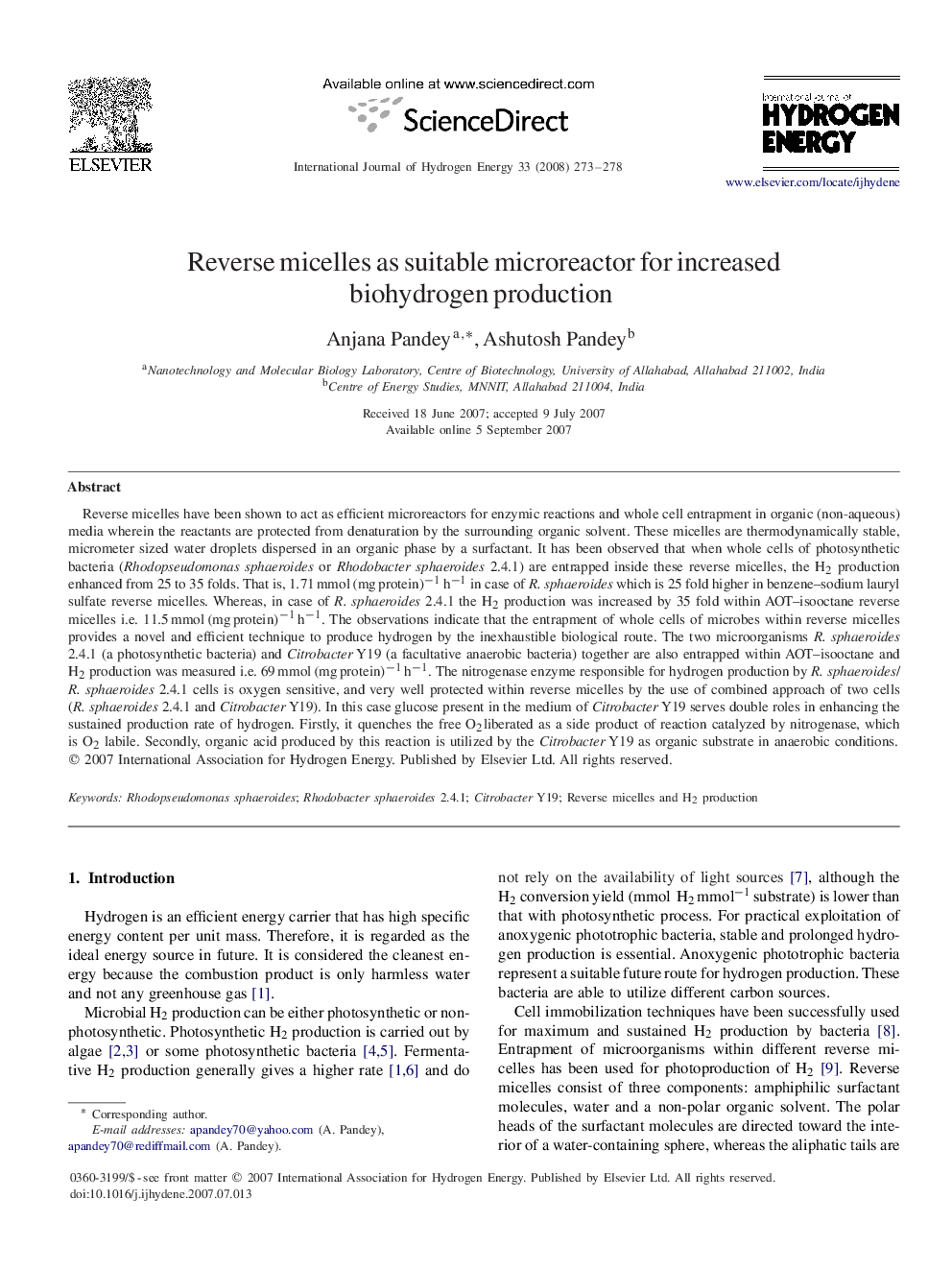| کد مقاله | کد نشریه | سال انتشار | مقاله انگلیسی | نسخه تمام متن |
|---|---|---|---|---|
| 1279463 | 1497665 | 2008 | 6 صفحه PDF | دانلود رایگان |

Reverse micelles have been shown to act as efficient microreactors for enzymic reactions and whole cell entrapment in organic (non-aqueous) media wherein the reactants are protected from denaturation by the surrounding organic solvent. These micelles are thermodynamically stable, micrometer sized water droplets dispersed in an organic phase by a surfactant. It has been observed that when whole cells of photosynthetic bacteria (Rhodopseudomonas sphaeroides or Rhodobacter sphaeroides 2.4.1) are entrapped inside these reverse micelles, the H2H2 production enhanced from 25 to 35 folds. That is, 1.71mmol(mgprotein)-1h-1 in case of R. sphaeroides which is 25 fold higher in benzene–sodium lauryl sulfate reverse micelles. Whereas, in case of R. sphaeroides 2.4.1 the H2H2 production was increased by 35 fold within AOT–isooctane reverse micelles i.e. 11.5mmol(mgprotein)-1h-1. The observations indicate that the entrapment of whole cells of microbes within reverse micelles provides a novel and efficient technique to produce hydrogen by the inexhaustible biological route. The two microorganisms R. sphaeroides 2.4.1 (a photosynthetic bacteria) and Citrobacter Y19 (a facultative anaerobic bacteria) together are also entrapped within AOT–isooctane and H2H2 production was measured i.e. 69mmol(mgprotein)-1h-1. The nitrogenase enzyme responsible for hydrogen production by R. sphaeroides/R. sphaeroides 2.4.1 cells is oxygen sensitive, and very well protected within reverse micelles by the use of combined approach of two cells (R. sphaeroides 2.4.1 and Citrobacter Y19). In this case glucose present in the medium of Citrobacter Y19 serves double roles in enhancing the sustained production rate of hydrogen. Firstly, it quenches the free O2O2liberated as a side product of reaction catalyzed by nitrogenase, which is O2O2 labile. Secondly, organic acid produced by this reaction is utilized by the Citrobacter Y19 as organic substrate in anaerobic conditions.
Journal: International Journal of Hydrogen Energy - Volume 33, Issue 1, January 2008, Pages 273–278